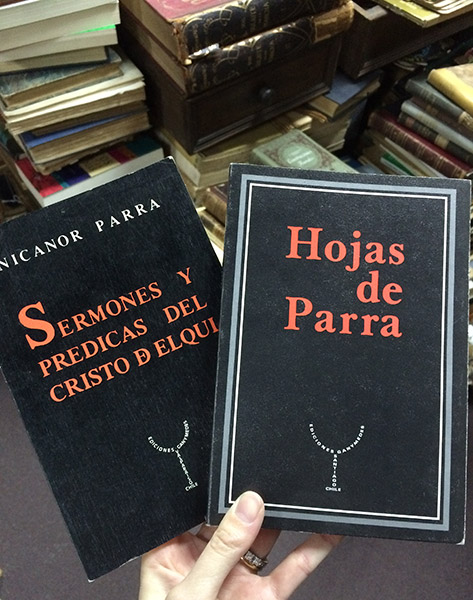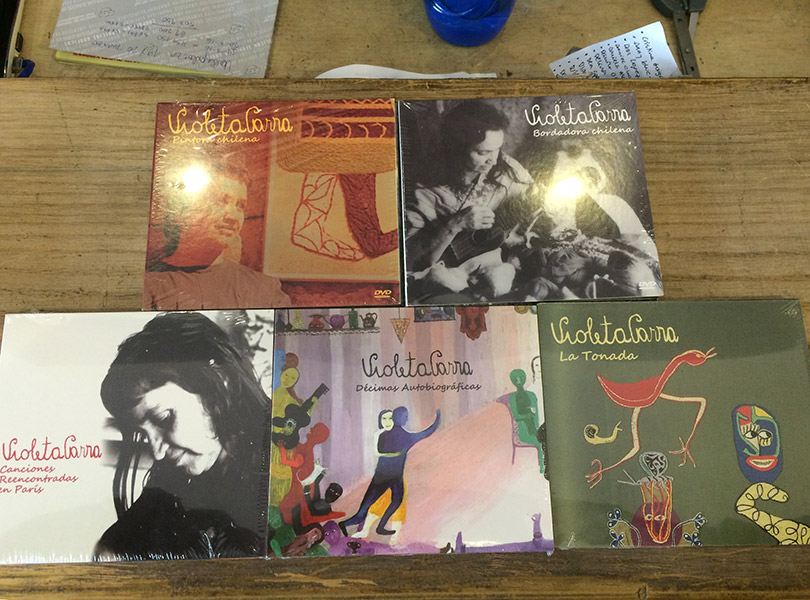It is interesting when you take things for granted, things that you are aware of in your daily life and expect them to always be there to then find out that they are truly hidden gems waiting to be found. The Parra family in Chile have always been a strong creative inspiration for many musicians, poets, writers and artists, a true Chilean family coming from a very rural background and surprised the world with their astoundingly creative minds. When I began to work as Beatriz Bustos’ curatorial assistant along with Amparo Irarrazaval for this project, it all began with a long investigation, practically an entire year where we worked alongside Beatriz and Zara researching on both the more renowned figures of art of South America as well as a younger generation of artists. And, throughout this research, specifically when researching the artistic context of our country, Chile, we noticed how many of the younger generations were truly inspired by the works of both Violeta Parra and Nicanor Parra, both different in their forms of practice but truly contemporary for the historic period they were living in.
This piece of information should not have been a surprise to us, but nevertheless it was. A good one though, to see just how strong their impact has been in our society, an impact that in recent years one might say has been taken for granted. Beatriz and Zara made the curatorial decision to include documentation that gives insight into the life of these two sources of creation. And so Amparo and I embarked on what I now see as a mission, yet did not think of it in this way in that moment, to go out in the centre of Santiago looking for objects of Violeta and Nicanor. We began searching in all the major bookstores, and we were shocked to find out that many of these bookstores did not have Nicanor’s classics, only new re-edited editions, or that there have been very few books made of Violeta Parra’s life and work. We then walked towards old record stores to see if we could find Violeta’s classic vinyls only to once again come to understand that there were so few of these available in Chile that they were almost impossible to find in stores. I was suddenly beginning to realize that something I thought was so present in our country really seemed to be vanishing, stored away in old private collections in dusty drawers belonging to older generations of Chileans.
When we finally began to accept that we were going to fail and we would not be able to find objects to send to the Auckland Art Gallery, Amparo and I thought we’d try walking through the antique fairs we have in a neighbourhood called Persa. And so the next morning we set off around old storage containers that have many makeshift stands with collections of old photographs, magazines, books, vinyl discs, letters, etc. We approached the first stand asking the man if he had any records by Violeta and he says 'I don’t have them here with me but I might have some back home, these are so hard to find, I generally keep them at home and only sell them to those who are really interested.' We kept moving onto the books and magazines. I then asked another man if he had any photographs, old newspapers, really anything of the Parras, he answered 'I think I might have some postcards but I most likely have them at home, they’re just so hard to find these days I’ve decided to keep them safe.' Talking about the very hard time we had finding anything for the exhibition he nodded and said he’d let me know, and finished saying, 'You know it is curious, during the 80s there were things about the Parras everywhere, posters, postcards, they were on the news, many vinyl discs of Violeta, and suddenly it seems they’ve just stopped reproducing these things and I don’t know why.'
I was beginning to understand what this man was talking about, and it really did feel that way, until suddenly we arrived at a corner that had Violeta’s records, a special edition magazine of Nicanor Parra, a few of his books and songbooks of Violeta as well. Nicanor Parra said 'Thoughts are not born in one’s mouth, they are born in the heart’s heart' and it was just so with these objects.

